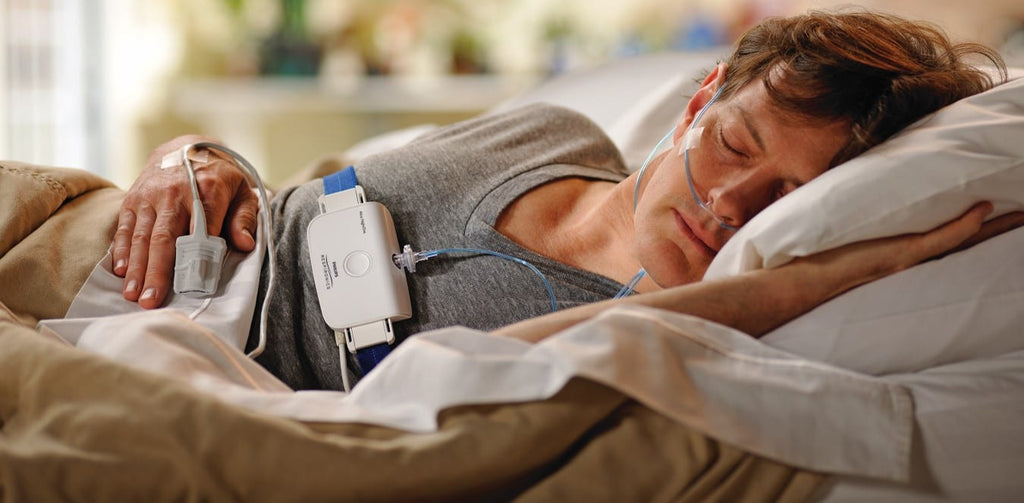An at-home sleep study can be an excellent option for those who are already suspicious that they may be suffering from some sort of sleep disorder, especially sleep apnea. While conventional lab-based sleep studies are available, they can be expensive, uncomfortable, and anxiety-inducing. Taking a home sleep study allows you to measure your breathing and other sleep factors that can lead to a clear diagnosis. Here is a breakdown of what and how an at-home sleep test can get you a helpful diagnosis.
What Data Gets Collected?
A home sleep test will measure a series of biometrics that will give the board certified sleep physician interpreting your results a clear picture of your sleep quality. The most important data factors are blood oxygen saturation, breathing patterns and depth, heart rhythms, snoring, and body position during sleep. All of these are crucial to determining your sleep patterns and assessing disruptions.
How Does the Test Collect Data?
An at-home sleep test device will be shipped to you so you can apply the sensors and conduct the study in the comfort of your own home and your own bed. The device used for home sleep studies has three sensors that will collect data throughout your night of sleep: a small nasal tube will measure your airflow and breathing patterns, an adjustable belt will track your respiratory efforts, and a finger sensor will measure the oxygen saturation of your blood.
The test device also has a built-in body position sensor that will provide the interpreting sleep physician with a series of important data. The position sensor will monitor your body position, pressure flow, snoring, respiratory (or breathing) effort, SpO2, pleth, and pulse rate. All of this information collected through the device sensors will help diagnose common sleep disorders, particularly sleep apnea.
Who Interprets Your Measurements?
Once you send back your at-home sleep test kit, a board certified sleep physician will review your data, such as blood oxygen saturation, breathing patterns, respiratory effort, body position, heart rhythms, and other bioelectric information. The physician will create a complete report that will interpret your results, giving you a diagnosis as well as treatment recommendations. Shortly after your results come back to your home sleep test provider, you’ll be contacted by a patient care representative who will go over your results with you and inform you of any sleep disorder diagnosis, like sleep apnea.
Should you receive a sleep disorder diagnosis, your patient care representative will review your treatment options with you. If you’re diagnosed with sleep apnea, the most effective and common treatment is the use of an automatic positive airway pressure or AutoPAP machine. Other obstructive sleep apnea treatments included continuous positive airway pressure or CPAP machines, dental appliances, weight loss, or surgery.
An at-home sleep test is an excellent alternative to costly, uncomfortable in lab sleep studies. If you or someone you know are worried about potential sleep disorders, like sleep apnea, look into an at-home sleep test and see if it’s the right option for you. Knowing how to improve your quality of sleep will help you improve your quality of life and lessen your risk factors for other health problems down the road.

